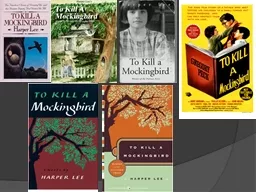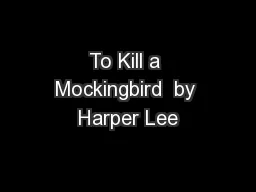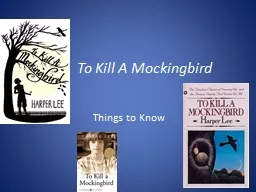PPT-By Harper Lee
Author : phoebe-click | Published Date : 2017-10-09
To Kill a Mockingbird Setting Genre Tone Maycomb Alabama fictional city 19331935 Fiction comingofage story Nostalgic humorous yet dark at times Themes Racial Prejudice
Presentation Embed Code
Download Presentation
Download Presentation The PPT/PDF document "By Harper Lee" is the property of its rightful owner. Permission is granted to download and print the materials on this website for personal, non-commercial use only, and to display it on your personal computer provided you do not modify the materials and that you retain all copyright notices contained in the materials. By downloading content from our website, you accept the terms of this agreement.
By Harper Lee: Transcript
Download Rules Of Document
"By Harper Lee"The content belongs to its owner. You may download and print it for personal use, without modification, and keep all copyright notices. By downloading, you agree to these terms.
Related Documents














